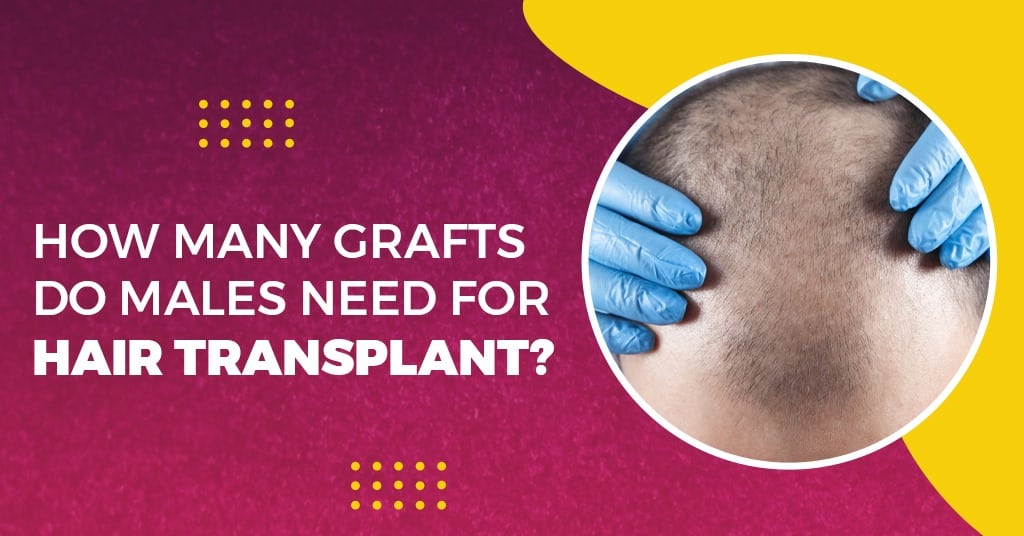Hair transplant in Varanasi is a popular treatment for male hair loss or baldness. One of the most important aspects of planning a successful hair transplant is determining how many grafts are required. This figure varies greatly depending on several factors, including the severity of hair loss, desired density, and personal goals. In this blog post, we’ll look at these factors and provide insight into estimating the number of grafts needed for a male hair transplant. Hair transplantation has emerged as a popular treatment option for males suffering from hair loss or baldness, providing a permanent solution to restore confidence and a youthful appearance. The exact number of grafts required is important for the success of any hair transplant procedure. A variety of factors influence this critical figure, each of which has a significant impact on the outcome of the restoration process. Understanding these factors is critical for both the patient and the surgeon, from the first consultation to the outcome. Throughout this blog post, we’ll delve deeply into the multifaceted considerations involved in determining the best graft count for male hair transplantation, shedding light on the complexities of the procedure and providing valuable insights for those embarking on their hair restoration journey.
Factors Influencing Graft Count:
- The extent of Hair Loss: The Norwood Scale divides male pattern baldness into stages. Individuals in advanced stages of baldness (e.g., Norwood Scale stages 5-7) usually require more grafts to achieve adequate coverage than those in earlier stages.
- Desired Density: Some people may want more hair density, which requires more grafts. This factor is subjective and varies according to individual preferences and aesthetic goals.
- Hair characteristics: The texture, color, and curliness of an individual’s hair all play an important role in determining graft count. Coarse, curly hair provides better coverage and requires fewer grafts than fine, straight hair.
- Hair Restoration Goals: The level of transformation desired by the individual influences graft count. Those seeking subtle changes may require fewer grafts, whereas those seeking a more dramatic change may require a greater number of them.
Estimating Graft Count:
- Consultation with a Specialist: The procedure begins with a consultation with a trained hair restoration specialist or surgeon. During this consultation, the specialist evaluates the extent of hair loss, examines the donor area, and discusses the patient’s objectives.
- Graft Calculation: The surgeon uses specialized tools and techniques, such as graft calculators or digital imaging software, to estimate the number of grafts required based on the previously discussed factors.
- Customized Treatment Plan: Based on the assessment, the surgeon creates a personalized treatment plan that includes the number of grafts needed, the proposed hairline design, and the expected outcome.
Example Scenarios:
- Mild to Moderate Hair Loss: People with mild to moderate hair loss (e.g., Norwood Scale stages 2-4) may need between 1000 and 2000 grafts for frontal hairline restoration and moderate crown coverage.
- Advanced Hair Loss: Those with more advanced hair loss (e.g., Norwood Scale stages 5-7) may require 3000 to 5000 grafts or more for complete coverage and a fuller appearance.
Here’s a general idea of graft requirements for specific areas:
Hairline: 800-1500 grafts, with additional grafts for temporal points.
Frontal Third (including hairline and central core): 2000-2500 grafts.
Front Half: 2500-3000 grafts.
Front Two-Thirds: 3000-4000 grafts.
Crown: 1500-2000 grafts.
Conclusion:
Choosing the right number of grafts for a hair transplant is a personalized process that necessitates a thorough evaluation by a qualified specialist. To achieve the best results, a customized treatment plan can be developed by taking into account factors such as hair loss extent, desired density, hair characteristics, and personal goals. Individuals considering a hair transplant should consult with reputable surgeons to receive expert guidance and realistic expectations about the procedure. Remember, these are only estimates. During the consultation with the best hair transplant surgeon in Varanasi will evaluate your specific case. They will take into account your hair loss pattern, desired outcome, and donor area to develop a personalized treatment plan that includes the exact number of grafts required.
This blog post provides a comprehensive overview of the factors that influence graft count in male hair transplantation, as well as an outline of the process for estimating the number of grafts needed for a successful procedure.

